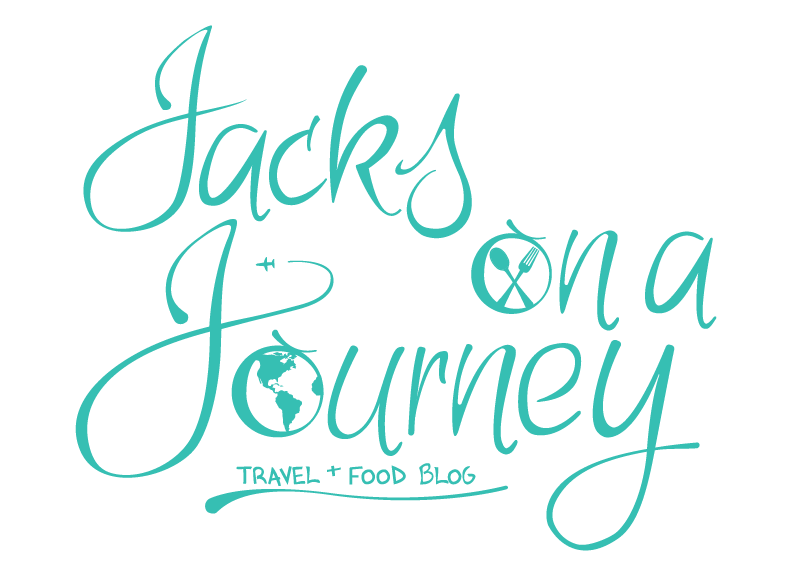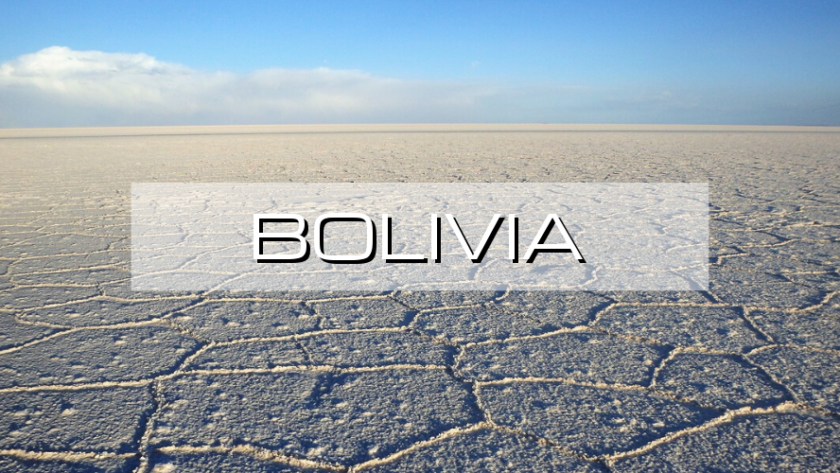Before travelling please be sure to consult any local travel advice.
Bolivia is an extraordinary country. Surely no visitor there could say otherwise. And while we certainly found all the wonder and more which we were seeking, we also discovered the country to be quite… thought provoking.
What I mean to say is, that for all the adventures we enjoyed there were certainly a few frustrations experienced along our journey.
Our first (or more accurately third) impression of Bolivia, after excitement and awe, was probably apprehension. We knew that poverty was rife across the country but I think it was witnessing their devastating garbage disposal system (there wasn’t really one) on Day 1 in Copacabana that made us skeptical.
I absolutely, in no way whatsoever, mean for these grievances to be a deterrent for travellers to visit Bolivia. Indeed it should be on any budget backpackers itinerary to South America!
There is a fascinating culture to be discovered here. Not to mention it’s world-famous and dramatic landscapes! Bolivia is home to the highest lake in the world, the largest salt flats in the world and the world’s most dangerous road!

Costs
CURRENCY: Bolivianos
1 USD = ~6.91 BOB
1 GBP = ~8.79 BOB
*As of May ‘2024
It was around 1 USD = 7 BOB when we visited in Dec ’17.
Bolivia was undoubtedly one of the cheapest countries we visited in South America.
We would say our budget probably averaged out at around $35-$40 USD each per day. And the only reason it was even this high was because we did a lot of tours over our few weeks here!
It’s worth noting that all the excursions we did in Bolivia would have cost a hec of a lot more anywhere else though so really, we think, we saved a fortune!
Accommodation costs were decent. In La Paz, backpackers can expect to spend around $10 per night for a dorm bed. And it gets even cheaper once you leave this popular city. We bagged a lush private room, with ensuite, in Sucre for just $18 per night! Definitely a winner when travelling in a two.
Food
Bolivia is not exactly revered for it’s cuisine. In fact we were a little nervous about the food thanks to comments from other backpackers who had already passed through.
Comically, our first experience did nothing to dismiss these sentiments. Turns out, you can go very wrong with a cheeseburger! Our own faults for craving something more western I guess.
That burger aside, I would say we ate pretty damn well in Bolivia, especially when we ate more local produce.
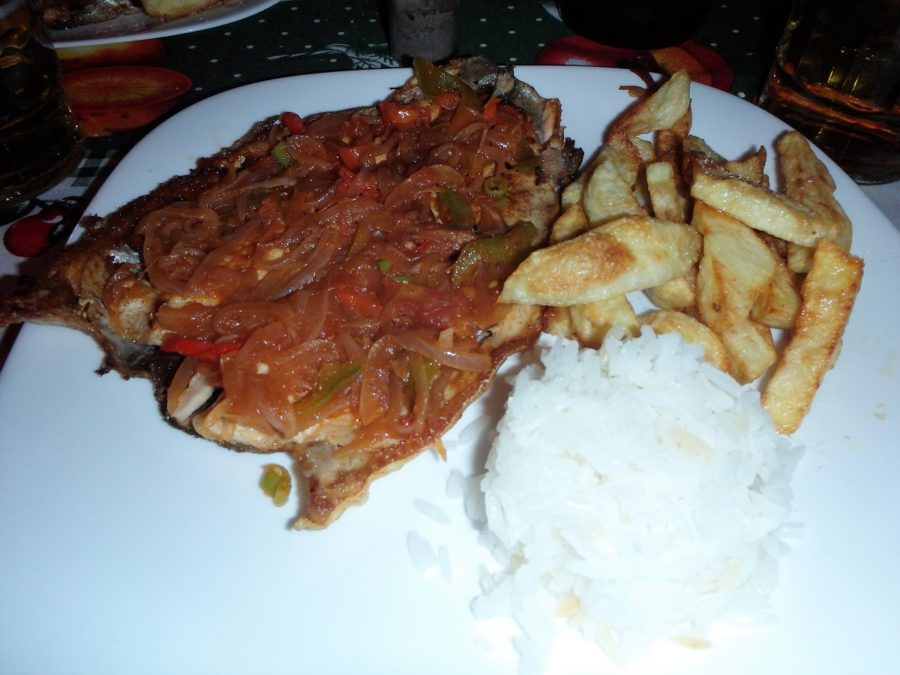
Fresh trout from the waters of Lake Titicaca (or so we were told) and freshly baked salteñas made our list of favourite foods in South America.
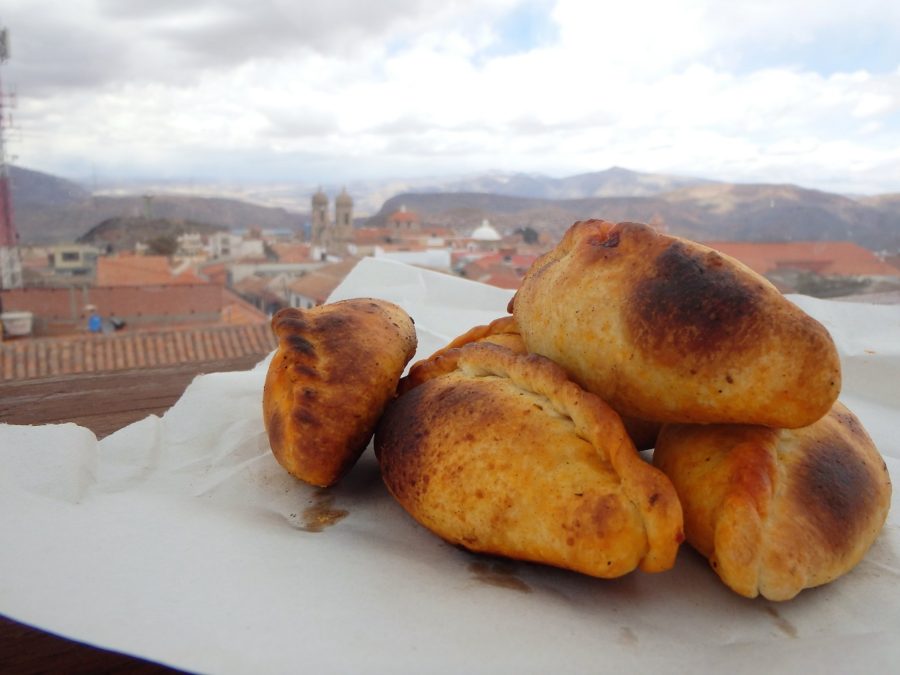
Even the menus provided some pre-dinner entertainment…
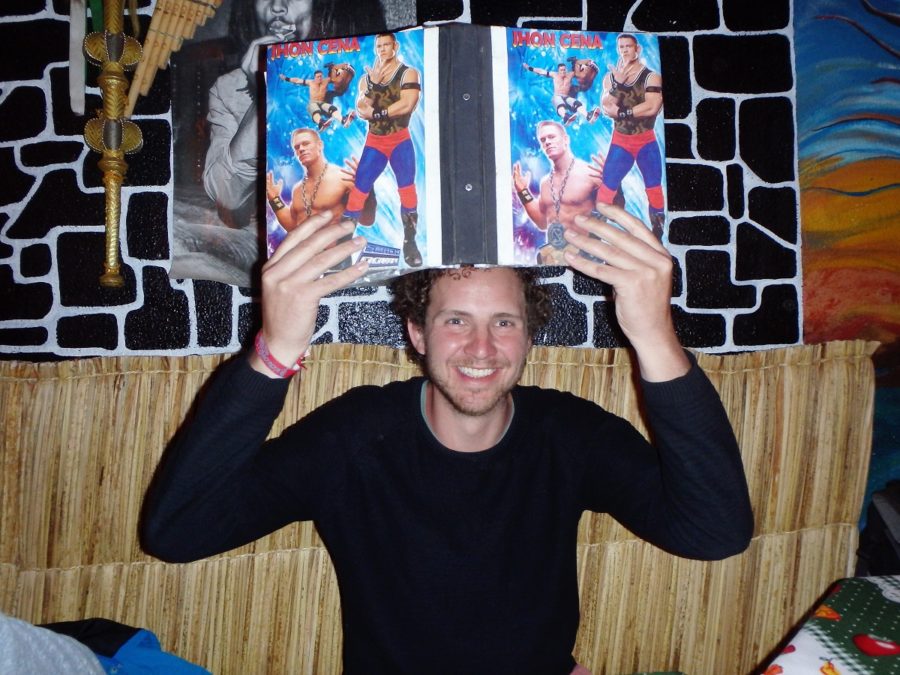
The Journey
We made our way to Bolivia from Peru‘s southern border, crossing from Puno into Copacabana. Despite being land-locked, the journey does involve a short journey across Lake Titicaca…
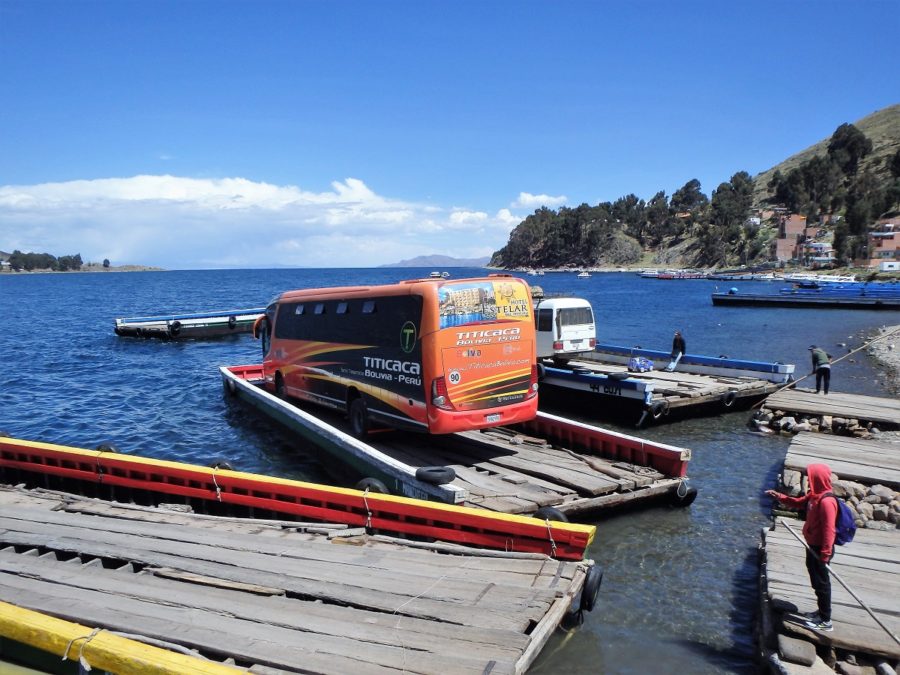
Copacabana
While many backpackers it seems will skip Copacabana and head straight for La Paz, we totally think it is worth a night or two in this unique town. We feel it gave us a great introduction to the country and the Andean culture.
A great example of this was a two-day-long festival going on during our stay. Given the level of celebration, we naturally thought it was a holiday or some form of annual event. But nope! This is apparently how the Andean’s do weddings!
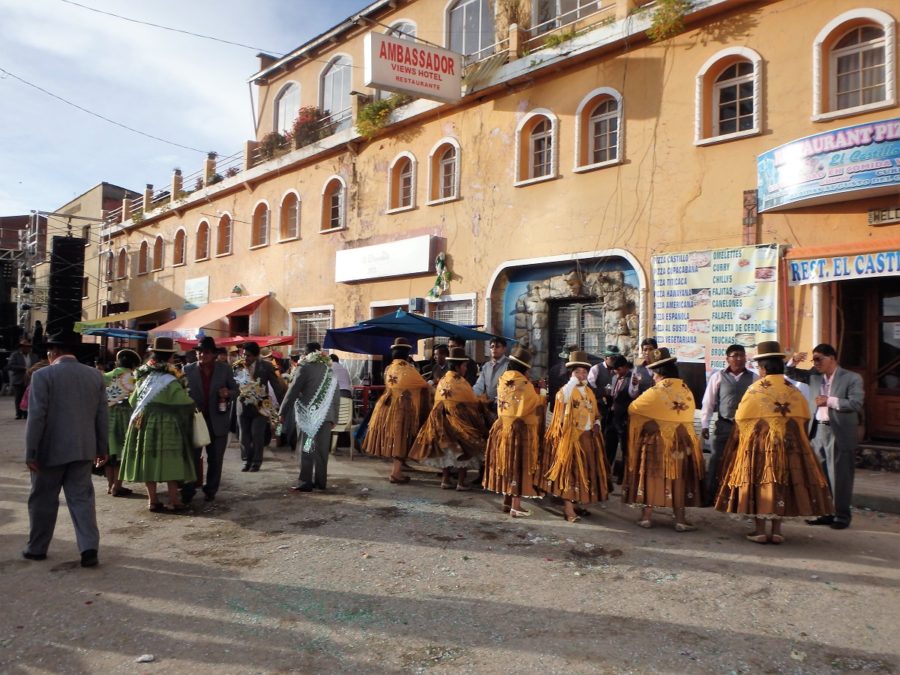
If you think the wedding party sounds a bit OTT, it might pale in comparison to learn that they also do ‘car blessing’ ceremonies in town to ensure good fortune on the road. And yes, it is as bonkers as it sounds!
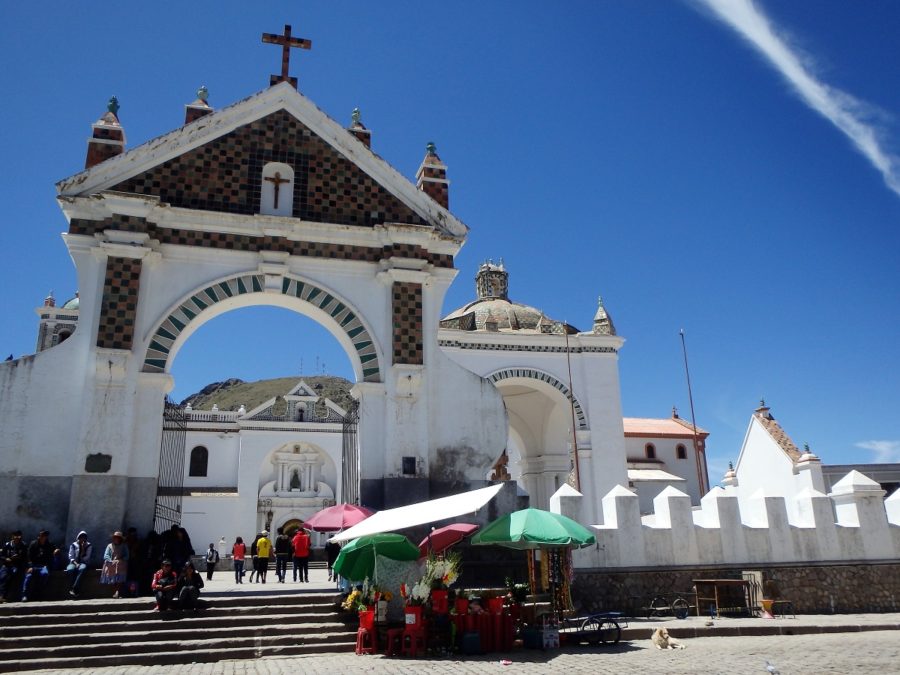
A more well-known attraction to see while in Copacabana is the popular Isla del Sol, Island of the Sun.
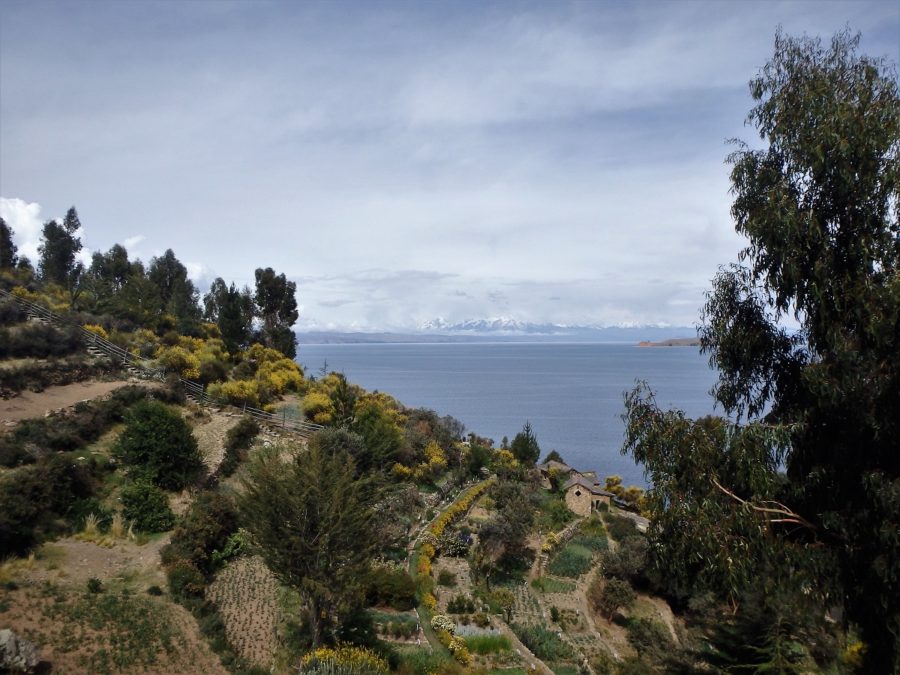
Ferry’s run to the island twice a day at 8.30am and 1.30pm. Boats still run private crossings over between these times, but it is not exactly backpacker-budget-friendly.
We suggest getting the early ferry over and the later ferry back. That would allow for plenty of time to admire the Escalinatas del Incas, Stairs of the Incas, and follow the trail over to the ruins at Pilkokama.
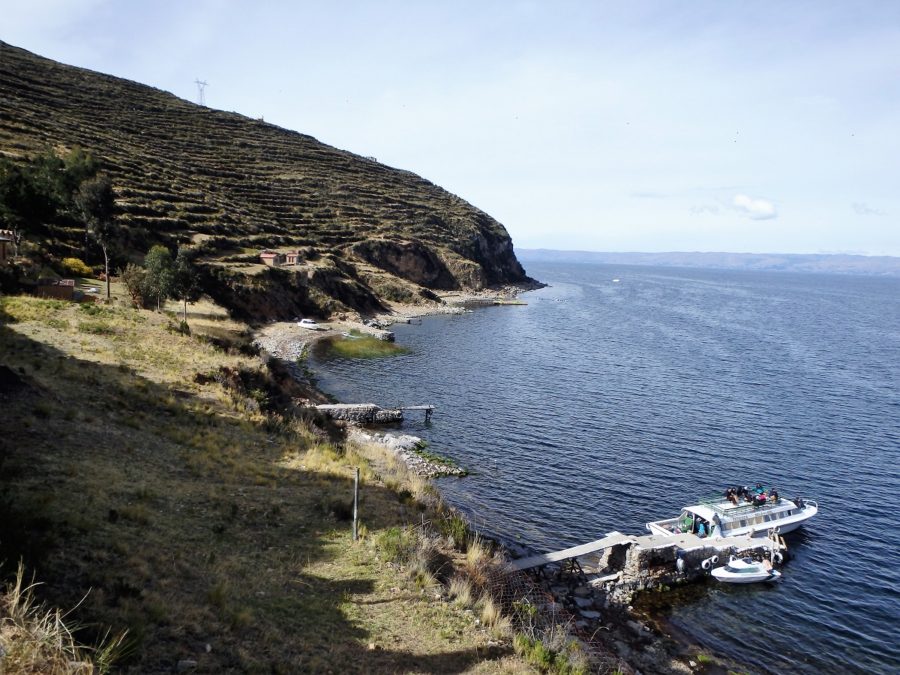
For those wanting a rewarding challenge then it is definitely worth hiking the steps up Cerro Calvario for awesome views over Copacabana. It doesn’t look like much, but the altitude makes it feel much more arduous.
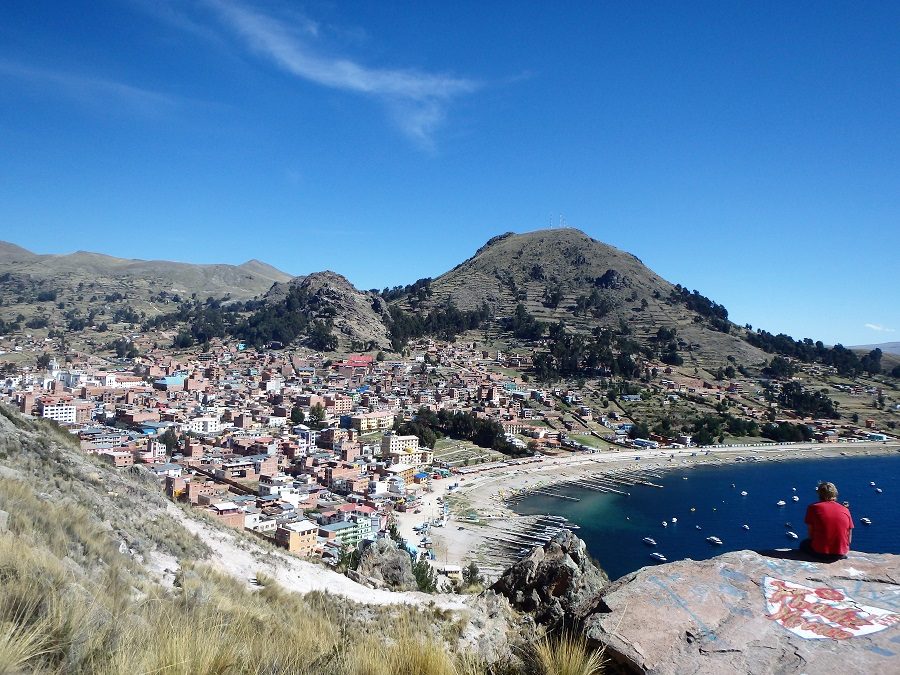
From the tranquil shores of Lake Titicaca, our next port-of-call was the bustling city of La Paz.
La Paz
To us, most cities can be a bit of a sensory overload but I swear La Paz is on another level! The sights, the sounds, the smells!!
A free walking tour of the city is a must. It gave us a further insight into Andean culture, most notably when visiting El Mercado de Las Brujas de La Paz, The Witches Market.
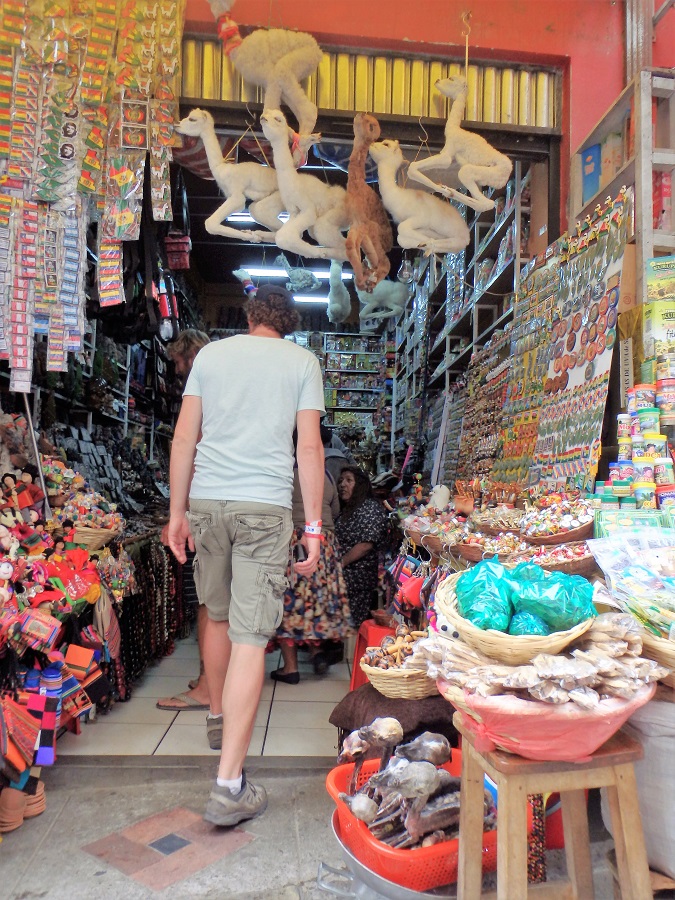
Here we were shown local medicines, love potions and various good-luck charms. The llama foetuses were a little disturbing, I won’t lie. As was the method of achieving said luck: the foetusus are burned along with fake objects of desire, for example money, and the ashes when built into a new home will ensure good fortune!
The tour also enlightened us to some of Bolivia’s political background as well as it’s religious heritage. It was interesting to learn that a number of Bolivians practice a fusion of Catholicism and traditional beliefs such as Pachamama (Mother Earth).
The wonders of the Andean culture continued to astonish us in La Paz, most prominently in the form of Cholita Wrestling.
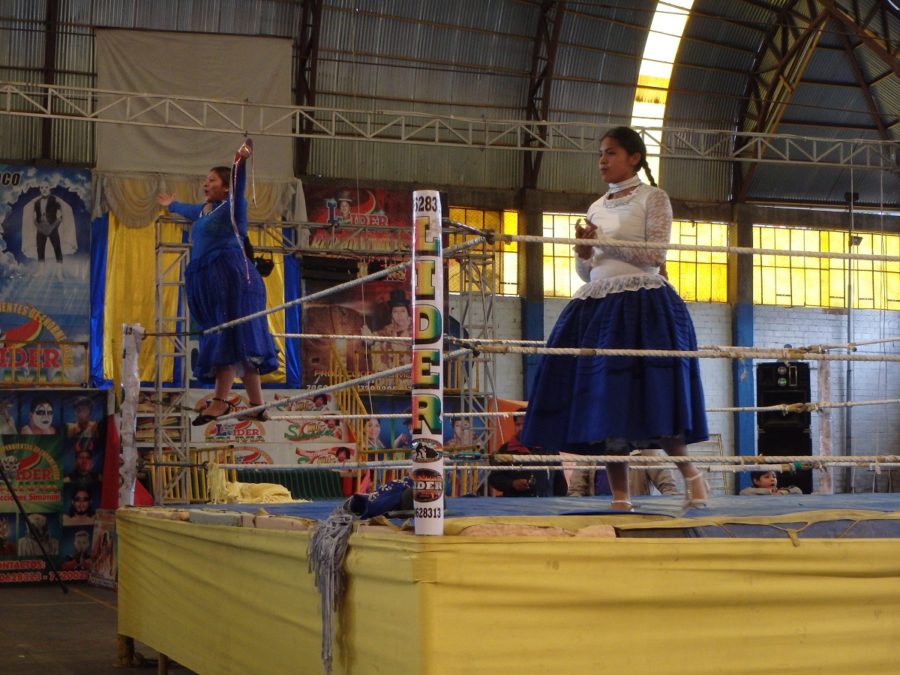
This local sport is both bizarre and brilliant! The female wrestlers don their most flamboyant outfits and are fully committed to their roles. Totally worth a trip to El Alto to watch!
For travellers looking to truly challenge themselves, then a trip to Bolivia’s infamous Death Road should be on the list.
Death Road
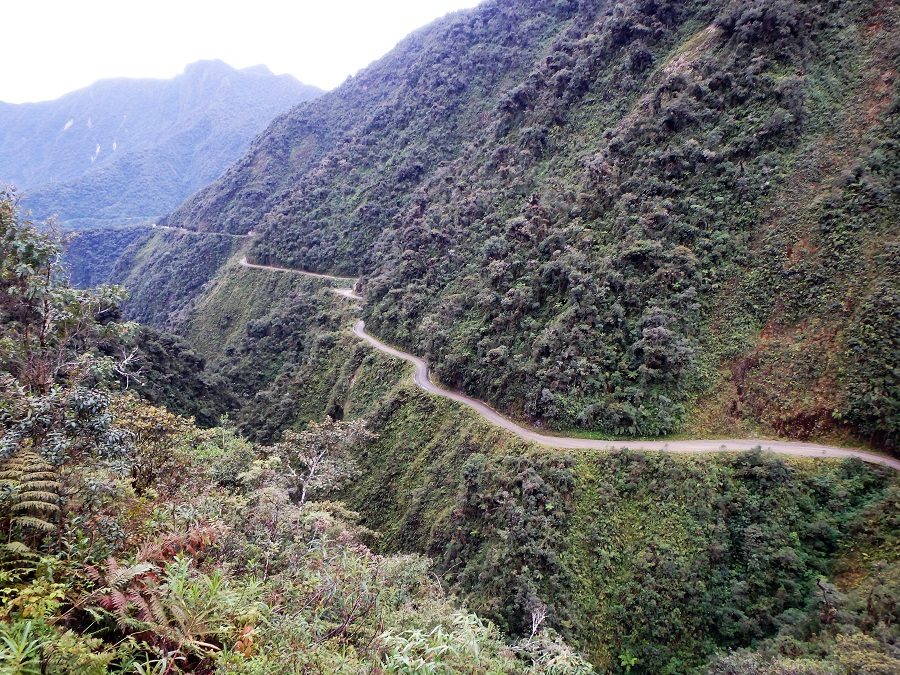
Beginning at an altitude of 4,700m we descended over 50km on mountain bikes.
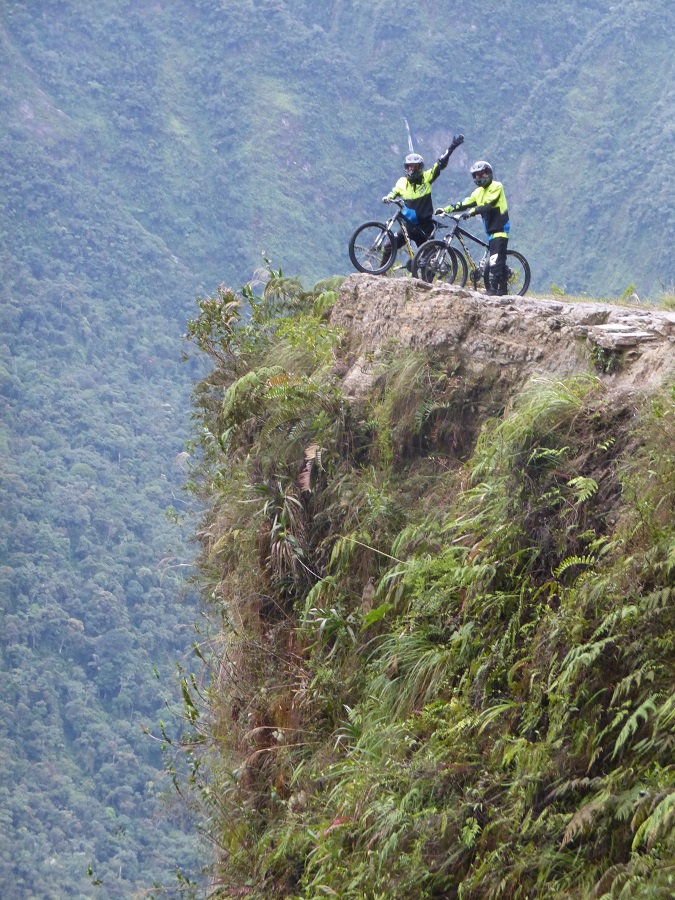
The cold and rain made it a challenging start for me. Not to mention I am probably the worst on a bike! I think I may have relaxed slightly after a few hours in… At least there was no uphill cycling. And I can thankfully say that I survived!
Former sight-seeing aside, there are two large-scale excursions that budget-seeking backpackers will do from La Paz: The Amazon and the Salt Flats.
The Amazon
Our journey to Bolivia’s Amazon region was certainly memorable. We even splurged on visiting both the jungle and pampas wetlands regions. To read more about our adventure-filled journey to the world’s largest rainforest then be sure to check out our blog HERE!
As for the Salt Flats, tours are available from La Paz but we decided to take it slow and make our own way directly to Uyuni. This allowed us to take some much-needed chill out time in Sucre, the country’s constitutional capital, and Potosi in the Andes.
Sucre
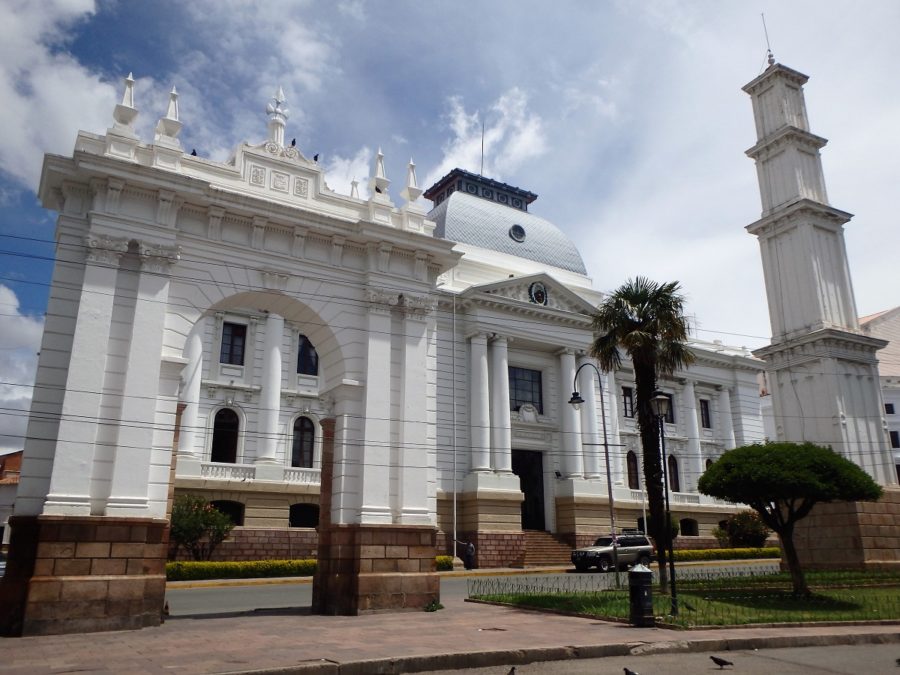
In stark contrast to La Paz, Sucre offers visitors a much more relaxed vibe. It is easy to see how it lays claim to being Bolivia’s most beautiful city.
Much to my delight was the added bonus of visiting Parque Cretácico, an archaeological sight that houses one of the largest collection of dinosaur footprints in the world! My inner nerd had a field day!
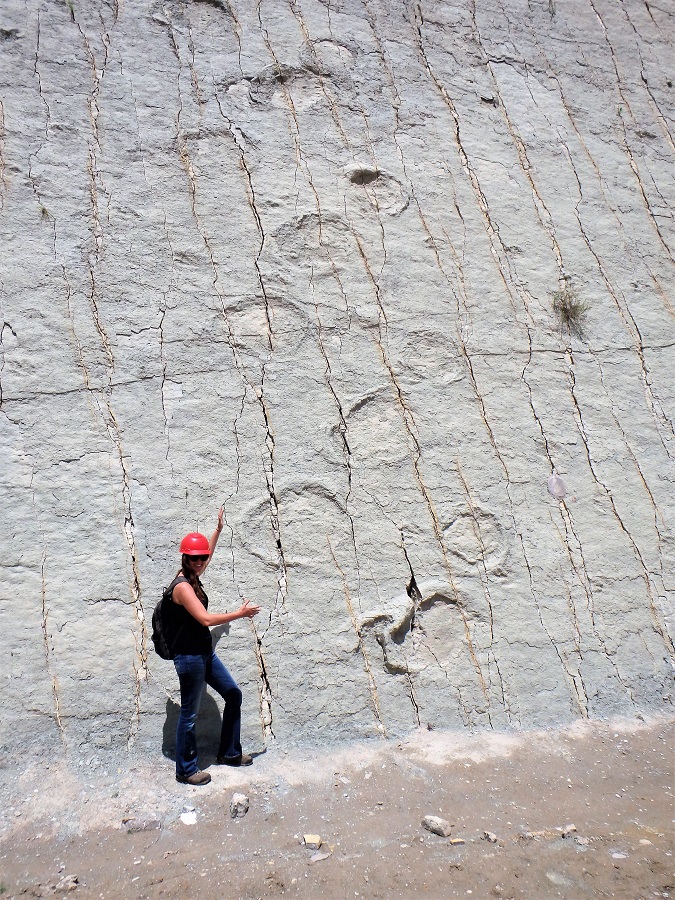
Moving from Sucre to Potosi is yet again another mind-blowing change of scenery.
Potosi
Built on mining, his once prosperous town was the world’s leading producer of silver during the 16th century. It even housed the first ‘mint’ in the Americas!
Sadly however, this short-lived wealth was to the detriment of millions of workers who lost their lives to the so-called “man-eating mines” of Cerro Rico.
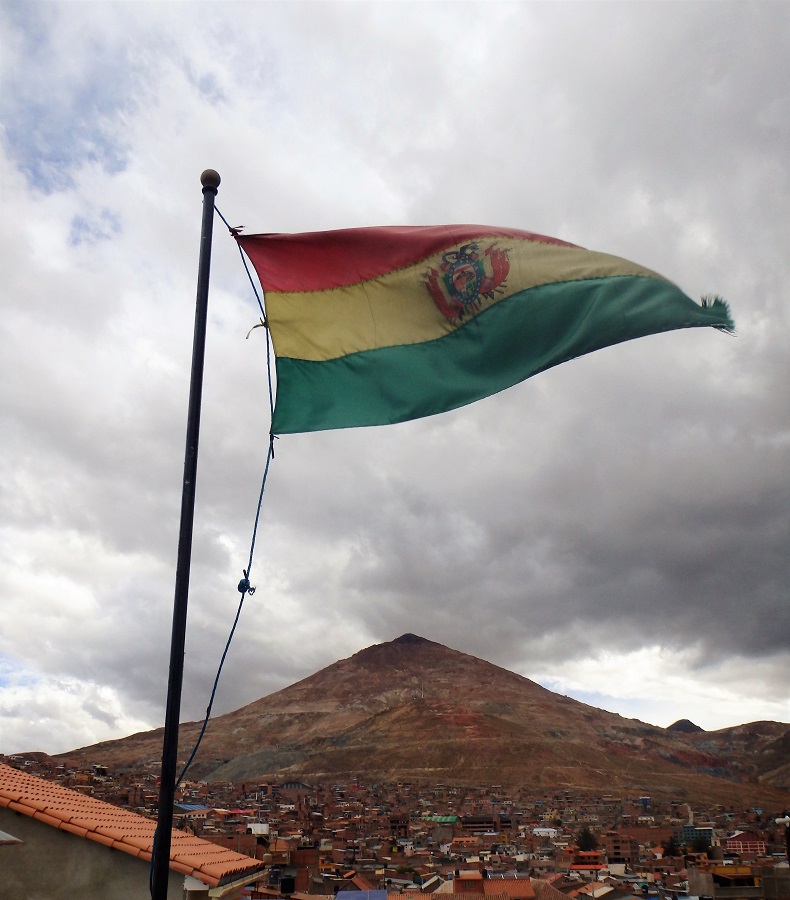
There are bizarrely tours that run here so travellers can actually visit some of the still-active mines. We didn’t really look into it but the safety and ethics seemed slightly questionable to us.
Our last stop in Bolivia was the nondescript town of Uyuni, the gateway to the Bolivian Salt Flats.
Uyuni & the salt flats
It was here we booked our 3-day/3-night salt flat tour directly. After a decent bit of research we had previously decided we wanted to go with Red Planet Expeditions. Why? Lets just say that horror stories of breakdowns, lack of fuel and even allergy issues from other backpackers put us off cheaper tours.
Sometimes it pays to spend the extra $50! Given our awesome experience, I would say it was worth it. And they were clearly pretty popular, despite it not even being peak season.
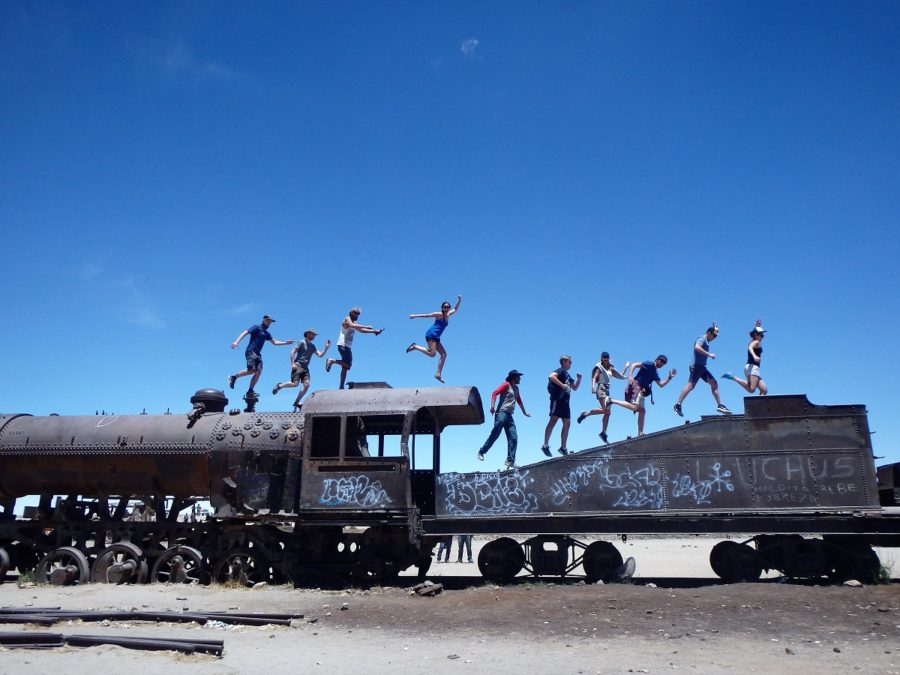
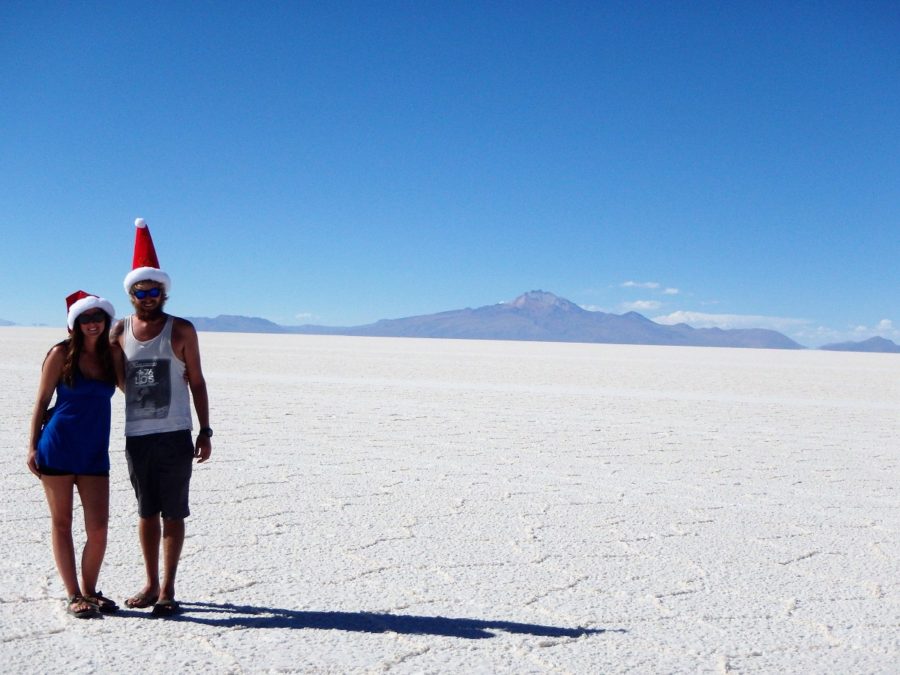
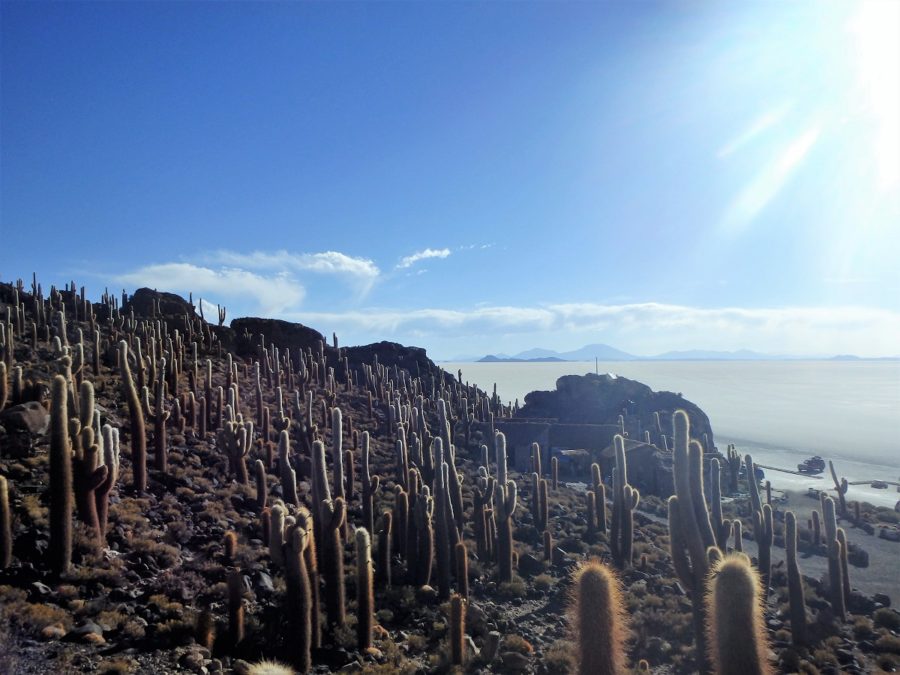
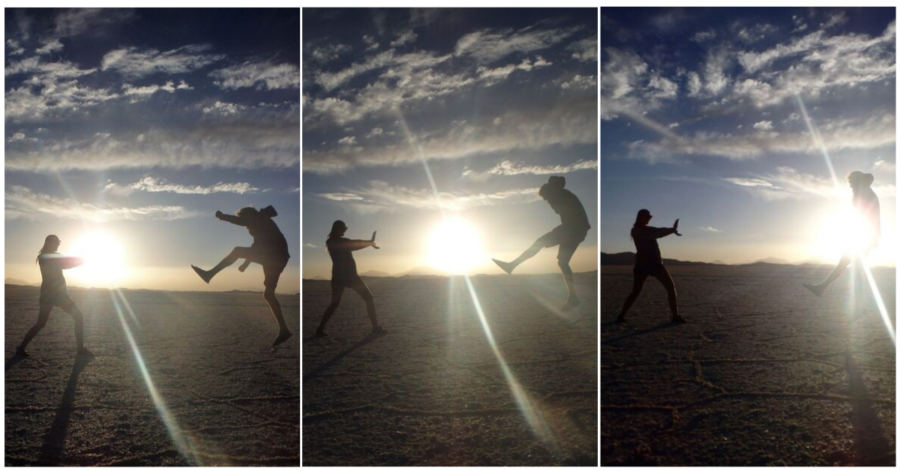
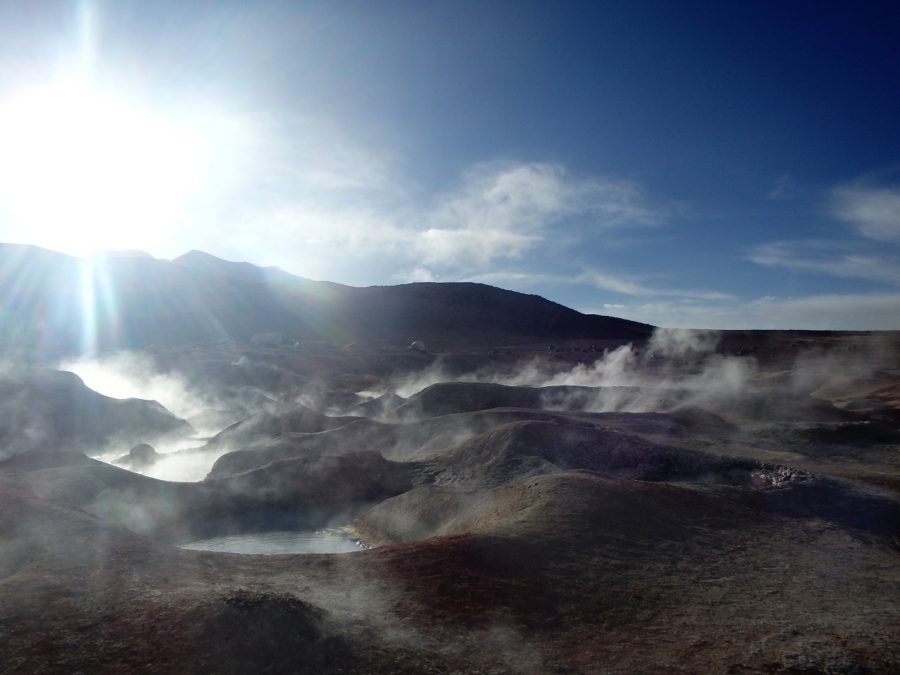
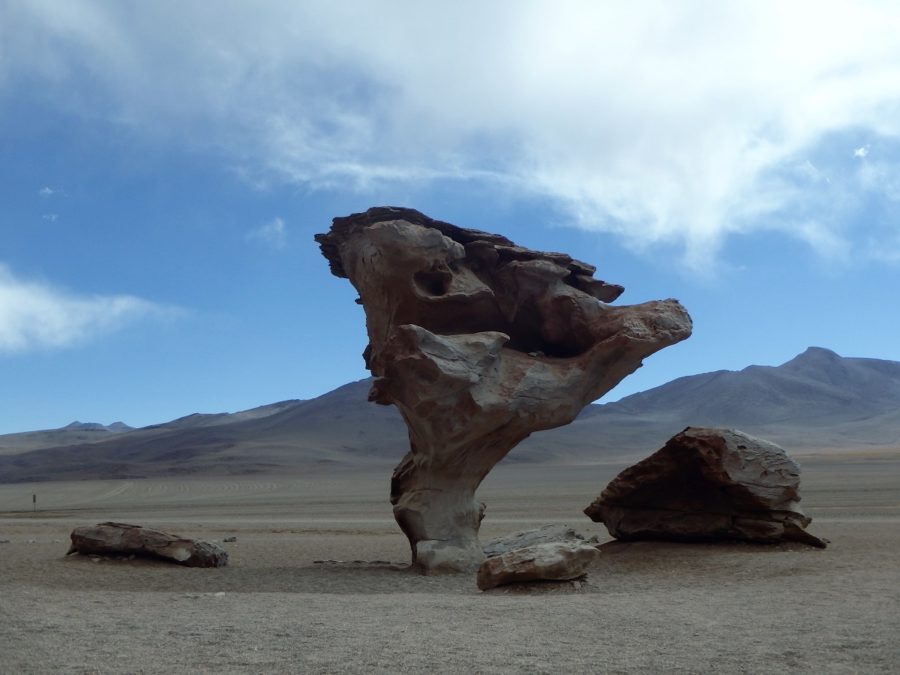

Despite these seemingly inhospitable environments, they are not completely devoid of animal life. We saw more alpacas and flamingos than we ever thought possible!
We were lucky also to have great company, which was a huge bonus since we celebrated Rhys’ birthday on the trip. I don’t think we will be able to trump watching The Geminids meteor shower from a hot spring at 5,000m elevation high anytime soon!
It was the perfect way to end our time in Bolivia 🙂
Accommodation
We already noted that budget accommodation in Bolivia will cost you around the $10 USD mark per night. Aside from the accommodation included on tours, here is a quick run-down of where we stayed:
La Paz: Loki Hostel
A party hostel is not our usual go-to but it was recommended and we went with friends. Heed our warning that alcohol and altitude can be a bad combo…
Sucre: Villa Oropeza Guest House
Definitely more our style. A clean, spacious private room with tons of outside space around the building. Definitely recommend.
Potosi: Hostal Eucalyptus
Perfect for our one night, this hostel was clean and the staff were super friendly.
Uyuni: Bunker Hostel
Another one-nighter for us and this hostel did the trick. No frills but cheap and cheerful, with a decent breakfast.
We always preferred to book in advance, typically using either Hostelworld or Booking.com, depending which was cheaper.
So there you have our run-down of Bolivia!
Without question it is a captivating country and, while it may test your patience at times, is hands down worth any backpackers time exploring 😀
